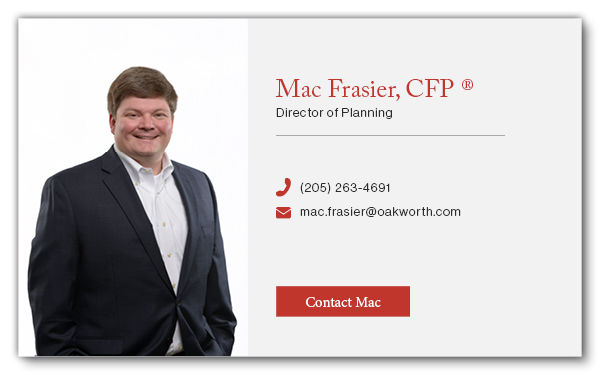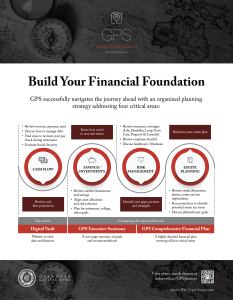
October is recognized as Financial Planning Month, which provides a great opportunity to get your finances in order before the busy holiday season. When it comes to creating your financial roadmap, there are four cornerstones that you should keep in mind.
The Four Cornerstones are as follows:
- Cash Management
- Savings/Investments
- Risk Management
- Estate Planning
Let’s face it no one wants to talk about insurance, but it is a vital part of a financial plan. So, for week three it we will take a dive into the world of insurance and cover some of the most common types that are reviewed as part of a financial plan.
Life Insurance
Unfortunately, life insurance can be made more complicated than it needs to be, but at its core is designed to help ensure that your loved ones are taken care off after your passing. “Taken care of” can take on many different meanings including but not limited to: paying for funeral, paying off debts, and all the way up to replacing lost income. While this is a topic that lends itself to many questions, for the sake of time I am only going to address the three most common ones I hear.
- I have life insurance through work do I really need more? – Maybe, most insurance policies offered through employers have a limitation on the amount of coverage they can provide. Another issue to be aware of is that you will not be able to take the coverage with you. So, if you change jobs, you are likely to be without coverage until your new benefits start. Also, a lapse in group coverage and a change in health could result in being uninsurable or much higher premiums when you go to purchase life insurance. If you are in good health, you may even find that you can purchase 20- or 30-year term for less than what you are paying for an employer policy.
- How much life insurance should I have? – There really isn’t a simple answer to this question because there are some many factors to consider. Some factors that you may want to consider include your current assets and level of debt, age and number of dependents, and your family’s financial goals.
- Human Life Value Method – For this method you would take your income and multiple it by the number of years until your planed retirement. For example, if you are 40 making $100,000 / year and plan to work until 60 you would multiple $100,000 by 20 which would equal $2,000,000. Meaning that you should have at least $2,000,000 in life insurance.
- DIME (Debt, Income, Mortgage, Education) Method – This method is used to determine a minimal amount of coverage needed to cover family expenses. With the DIME approach, your coverage should be enough to cover all of your outstanding debts (including your mortgage), pay for kids’ education, and replace your income until your children reach 18 years old.
- Do I need permanent (whole) or term? – Permanent life insurance which includes whole, universal, variable universal and many other types of policies are designed to provide coverage for the entirety of the insured’s life. These policies include a cash value in addition to the death benefit. As you can tell, permanent life insurance can be fairly complex. Therefore, it is very important to review these types of policies regularly to ensure the policy will not lapse (terminate) earlier than expected.
Term life policies on the other hand are less complex and only designed to cover a fixed term such as 10, 20, or 30 years. Because term policies tend to offer cheaper premiums, it is common to use these types of polices to secure a lot of coverage when it is needed most. For example, a married couple in their mid- 30’s with 3 young children is going to need more coverage than a 65-year couple with no children living at home.
The decision to utilize permanent or term insurance really depends on your specific financial goals and needs. One of the best ways to determine your specific need is through financial planning.
Disability Insurance
While life insurance tends to be the biggest focus when it comes to buying personal insurance. In reality for a working age person disability is more far more likely to happen than a premature death. Disability insurance is designed to replace a portion of your income if you are unable to work due to a disability.
- I have disability insurance through work do I really need more? Workplace disability plans are often capped in how much they can pay out per month. For example, a policy may state that benefits are capped at $10,000 / month. This could pose an issue for someone, who for instance is making $250,000 / year. Because they would be insured for less than 50% of their income. Another factor to consider is that workplace plans are often more restrictive in their definition of disability than a privately owned policy. Meaning that it might be harder to qualify or even continue to receive benefits. Group disability policies also might be lost when you leave your employer.
- Can’t I just claim get by on just social security disability? – Probably not. Social Security Disability Insurance (SSDI) is often very difficult to qualify for and requires that the disability be expected to last for longer than a year. It is also worth noting that the maximum benefit in 2022 is $1,358 / mo. Just like you shouldn’t count on Social Security as your primary source of income during retirement, it is best not to plan on SSDI as your primary source of income in the event of a disability.
Homeowners Insurance
On the surface seems to be simple and for the most part it is. However, there are some things that you should regularly (once a year) review when it comes to your policy.
- Review coverage limits – This is especially important after we have seen property values and building costs dramatically increase over the past few years. Does your cover the full cost to rebuild?
- Update your carrier regarding additional / renovations – Home additions, pools, major remodels, finishing a basement or even redoing a roof can impact the value of your home and require higher coverage limits.
- Personal Property – Your policy likely has two limits listed 1) Dwelling Coverage and 2) Personal Property. Personal Property refers to the contents of your home and typically is limited to a percentage of the value of your home. While that might seem like enough coverage it is important to note that many homeowners’ policies have limits or exclude coverage for: Jewelry, Artwork, Guns, Collections, and other high value items. For excluded items you should consider a personal articles policy.
- Excluded Items – While homeowners policies cover variety of perils there are a few potential devastating ones that are excluded. These are earthquake and flood insurance. If you live in an area subject to these risks, it is important to know that your homeowner’s policy likely excludes them, and you should consider supplemental coverage.
- Renting your home / Air BNB – If you choose to rent out your home or just a room it is important to speak with your insurance ensure your policy covers any potential damages or loss
- Home Inventory – A home inventory is a great way to expedite the claims process after a theft, damage, or loss. Its is a record of your insurable assets that is either written down or a digital version (video or photos) How to create a home inventory
Auto Insurance
Most states now require all vehicles to be insured and like homeowners’ insurance most people buy it and rarely review their coverages. Reviewing your policy at least annually is a best practice. Here are some things to look for:
- Liability coverage – This amount refers to the level of coverage you have if you are at fault for an accident. While many states (49 out of 50) mandate a minimum for this type of coverage like with many things in life the minimum may not be enough. A good starting place would be coverage limits of 100/300/100. The first number refers to the per-person injury liability, the second number refers to the per-accident Injury maximum, and the last number is the Property Damage Coverage. As vehicle values and assets increase you may consider upping your coverages to 250/500/250.
- Uninsured / Underinsured Motorist – reimburses you when an accident is caused by a driver who does not have auto insurance or does not have enough to cover the full cost of the claim. As a general rule this coverage should match your liability limits.
Umbrella Insurance
Umbrella insurance is simply insurance that provides additional coverage beyond the existing limits and coverage of other policies (home and auto). The most common example of when this type of policy would be triggered is if you are on the wrong end of a lawsuit. For example, if you caused an auto accident in which several people were severely injured. Often these policies will require you to maintain a higher liability coverage limit on your homeowners and auto policies. This added coverage is most valuable for individuals with significant assets. Umbrella coverages is inexpensive for the coverage it provides. Coverages start at $1 million and usually increase in increments of $ 1 million.
Personal Articles Policies
As I mentioned in the homeowner’s policy section there are many items that may be excluded from your policy or receive limited coverage. For those excluded items you may want to consider purchasing a personal articles policy. These policies can be used to cover art, jewelry, firearms, collections or most anything else of significant value. These policies typically are very affordable and depending on the company you may find rates around 80-90 cents per $100. So, for example $25,000 worth of jewelry may only cost around $225 a year to insure.
Thank you for your time this week. I hope you found this blog informative. Next week, join me as I discuss Estate Planning. In the meantime, should you have any questions, please feel free to reach out to your Oakworth Client Advisor.

This document is being provided for informational and educational purposes and is not meant to be taken as specific advice. Oakworth Capital Bank does not provide tax or legal advice. All decisions regarding the tax and/or legal implications of these strategies should be discussed with your tax and/or legal advisors before being implemented.


